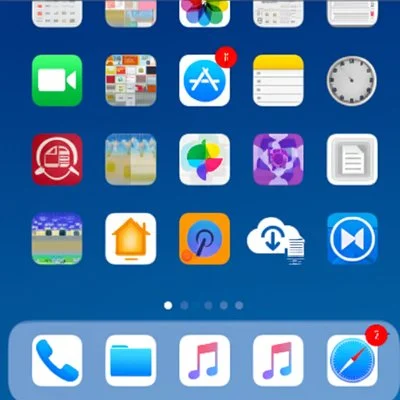'iPhone Storage Almost Full'? Here's How to Reclaim Space Without Deleting Your Photos

That dreaded “iPhone Storage Almost Full” notification always seems to pop up at the worst possible moment. Your first instinct might be to panic and start deleting precious photos and videos. Stop! While your photo library is often a major space-hog, you can reclaim gigabytes of storage without sacrificing a single memory. As iOS professionals, we'll guide you through the most effective methods to clean up your device while keeping your photo library intact.

1. The Ultimate Trick: Optimize Your Photo Library
This is the single most important setting to enable. It doesn't delete your photos; it simply stores the full-resolution originals in iCloud and keeps smaller, device-friendly versions on your iPhone. You can still view, edit, and share them as usual, and the full-resolution version downloads automatically when you need it.
Heads-up: This method requires you to have enough iCloud storage for your library. The free 5GB plan is often not enough, so a paid plan is usually necessary, but it's a small price to pay to protect your photos and free up immense space.
- Go to Settings.
- Tap on your name at the top.
- Select iCloud, then Photos.
- Ensure that Sync this iPhone is turned on.
- Select Optimize iPhone Storage.
Your iPhone will now begin the process of offloading the large files to iCloud, which can free up an incredible amount of space over time.
2. Offload Unused Apps
Do you have apps you downloaded for a one-time use and then forgot about? Offloading is a brilliant iOS feature that deletes the app itself but keeps all its documents and data. If you ever need the app again, you can re-download it, and all your information will be right where you left it. It's the perfect compromise.
- Go to Settings > General > iPhone Storage.
- Wait for the list of apps to populate, sorted by size.
- Tap on a large, infrequently used app.
- Select Offload App.
You can also enable this to happen automatically for apps you don't use often. On the same iPhone Storage screen, find the recommendation to Offload Unused Apps and tap Enable.
3. Clean Up Your Messages Attachments
Over years of group chats, you've accumulated countless photos, videos, GIFs, and documents. These attachments can quietly consume gigabytes of space. iOS makes it easy to find and delete the largest ones without scrolling through years of conversations.
- Go to Settings > General > iPhone Storage.
- Tap on Messages.
- Under the Documents section, you will see categories like Review Large Attachments.
- Tap on it, then tap Edit in the top-right corner.
- Select all the attachments you no longer need and tap the trash can icon.
Pro Tip: To prevent this from happening in the future, go to Settings > Messages > Message History and change "Keep Messages" from Forever to 1 Year or 30 Days.
4. Clear Safari and App Caches
Your web browser and other apps store temporary data (cache) to load things faster. Over time, this can add up. Clearing your Safari cache is a quick way to get some space back.
- Go to Settings > Safari.
- Scroll down and tap Clear History and Website Data.
Many third-party apps, like TikTok, X (Twitter), and Spotify, also have in-app settings to clear their cache. Open your most-used apps and check their settings menus for a "Clear Cache" or "Storage" option.
5. Review Downloaded Media
Content downloaded for offline viewing is another major culprit. Think of all those podcasts for a road trip, Netflix shows for a flight, or playlists on Apple Music/Spotify. Review and remove what you're done with.
- For Apple Music: Go to Settings > Music > Downloaded Music.
- For Apple Podcasts: Go to Settings > Podcasts > Downloaded.
- For other apps (Netflix, Spotify, etc.): You must open each app individually and manage downloads from within their library or settings sections.
A Note on "System Data"
You may see a large, mysterious category called "System Data" or "Other" in your iPhone Storage breakdown. This includes caches, logs, and other temporary files. You can't delete it directly, but following all the steps above—especially clearing caches and offloading apps—will often significantly reduce its size.



